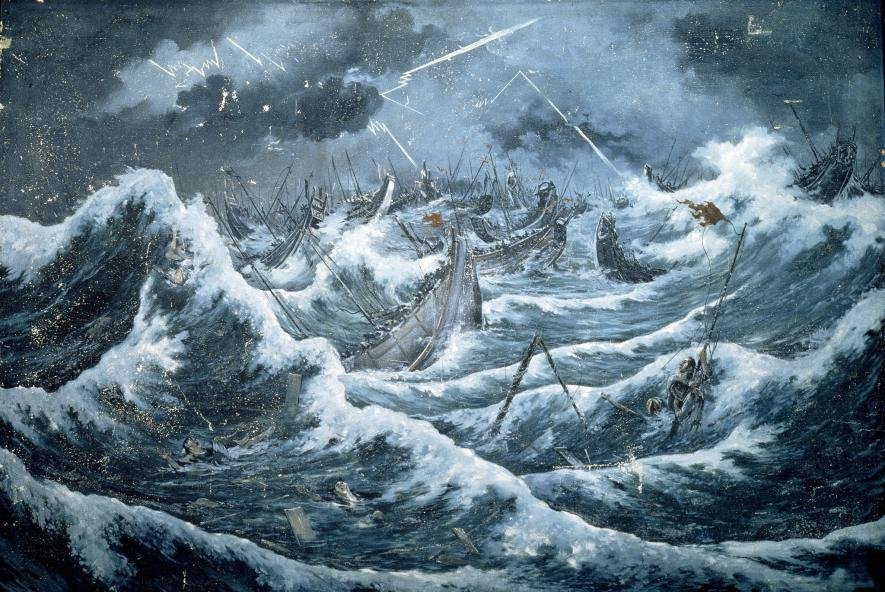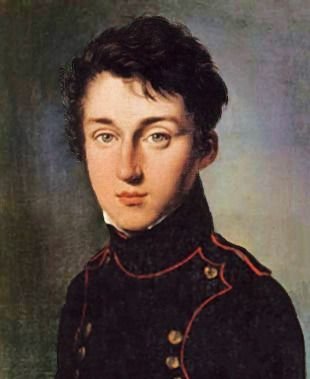This article is dedicated to all those families who lost their lives or suffered due to the catastrophic effect of Hurricane Harvey…my heartfelt sympathies are with them…may the almighty god give them strength to stand up again…
Hello and welcome to the brand new episode of Imagicnation ! A place where we will find out the answers to some of the most interesting & curious questions related to science...

According to legend, in 1274, when Kublai Khan’s troops started their journey through water to conquer Japan, a powerful typhoon, a Pacific tropical cyclone, came without warning, destroying Khan’s fleet and saving Japan. When the Mongols returned in 1281, with an even bigger army, another typhoon arrived and turned the attacking fleet into driftwood.

Thinking their emperor had ordered the storms to rescue them, the Japanese named these typhoons “divine wind”, or “kamikaze”. Native cultures in the Caribbean and Central America, like the Taino and Maya, told stories of “Huracán”, a god who launched wind and storms. Their ancient artifacts tell us they’d deduced these storms’ spiral shapes long ago, something Western scientists wouldn’t understand until 1831.
Tropical cyclones are called by different names in different oceans, but Atlantic hurricanes, like Katrina and Sandy, are probably the most renowned. These storms are some of the worst monsters that Earth’s Game-makers throw our way. A wholly formed hurricane can reach more than 100 miles across and travel hundreds of miles, and inside the eye, walls of clouds and ice can extend up through the whole lower layer of our atmosphere.
*But how does a storm that big even occur??!!
- The basic constituents for a hurricane are quite simple: heat and wind. The wind is simple. Wherever we discover low air pressure, air wants to move from the outside in to fill that low pressure. This is what generates a hurricane’s super-strong winds. But it doesn’t clarify why they spin.

Fig: Hurricane structure (Credits)
A hurricane’s winds want to move in a straight line, but their path is diverted thanks to the Coriolis effect. If our planet Earth wasn’t spinning, the destructive hurricanes wouldn’t either. A 100mph wind blowing north near the equator is also traveling east, along with the direction of Earth’s rotation. Because Earth is fundamentally a sphere, the nearer we get to the poles, the slower the rotation. So as that wind travels north, the atmosphere and the Earth below it aren’t spinning as fast, and the sideways motion of the wind surpasses Earth’s rotation, pushing it east. The same thing occurs for the winds on the other side, except they’re traveling slower, so they get pulled to the west. This is why cyclones whirl clockwise in the southern hemisphere, and anti-clockwise in the northern hemisphere. It’s also why hurricanes can’t form too near to equator, there isn’t enough difference in rotation at low latitudes to start them spinning. Moving in closer to the eye, hurricane winds speed-up, because of angular momentum, just like how a figure skater rotates faster when he pull his arms in.

Fig: Hurricane formation (Credits)
The second key constituent is heat from warm water. A hurricane works pretty much like an engine. Not the engine in your four-wheeler, but an ideal engine, like the one invented by French physicist Nicolas Carnot.

Fig: Nicolas Carnot (Credits)
First, a piston elevates. Normally, reducing the pressure cools a gas, but in a Carnot Engine, heat is added so the temperature stays constant even as the pressure decreases (Isothermal expansion). But what happens if we turn off the heat, and keep decreasing the pressure? The answer is simple…the gas cools !!!

Fig: Carnot’s engine (Credits)
Next, let’s reverse the first step, compressing the piston. We’d expect this higher pressure to heat up the gas, but in our engine, we’ve got a device to extract heat out so the temperature remains constant. Finally, we keep compressing the piston, but we stop taking away heat, so the temperature increases along with pressure (Adiabatic compression). Ideal engines like this don’t exist in the actual world, but a hurricane is one of the closest things we’ve got. As winds flow towards the center of a hurricane, we’d expect the low pressure to cool them, but the air is kept warm thanks to huge amounts of water evaporating. And I mean HUGE ! An average hurricane can hold more than a hundred billion pounds of water !!
*So how does evaporation maintain the warmness of wind ??
- Changing water from liquid to vapor, to tear those molecules apart and let them fly free, requires energy. This is why you feel cool when you come out of the pool, it’s what happens to a bowl of soup that’s kept out too long. Evaporating water carries away heat with it. That heat is deposited in the wind, so the temperature stays unchanged even as the pressure goes down, it’s just like the first step of our ideal engine. Then as the air rises, our heat source is gone, so water vapor condenses into liquid again, liberating its stored heat into the atmosphere. The temperature is actually more on top of a hurricane, thanks just to the heat liberated by condensing water vapor. High up, the air releases radiation into space as it moves out and down, just like step 3. Finally, that air returns back to Earth, compressing and getting warmer, and the hurricane engine is ready for next cycle. This feedback loop converts hurricanes into self-sufficient engines of catastrophe. A typical tropical cyclone consumes the similar amount of power as the entire United States. As long as there’s sufficient warm water, it keeps feeding itself, getting bigger and bigger until…………….
*Well, is there a boundary to how powerful a hurricane can be ???
- Size and rainfall are the chief predictors for how bad a storm will be, but hurricane intensity is rated by wind speed.

Fig: Hurricane scale (Credits)
Category 1 are the weakest, while whatever over 157 mph is included in Category 5. The recent occurring Hurricane Harvey was graded in Category 4. Using equations for Carnot’s ideal engine and data about Earth’s climate, scientists estimate 190 mph should be the maximum theoretical windspeed…
But after Typhoon Haiyan hit 195 mph in 2013,........
*Does that mean it’s time to add one more Category…Category 6?
- Let’s come to reality. After a certain wind speed, all destruction pretty much appears the same.
 (Source: cgtn.com)
(Source: cgtn.com)So, do you really think it makes any sense to add another category of “bad”??!! But it tells us something we really need to think about. As Earth’s climate warms, we’re adding more heat, more fuel into these engines of catastrophe, and undoubtedly, it's another reason to take our foot off the gas pedal….!!
That’s all for today guys…
Hope this helped to simplify the concept about hurricanes…
And if you have any queries/thoughts, please let me know in the comment section below…
References used :

1) http://science.howstuffworks.com/nature/natural-disasters/hurricane.htm
2) https://eo.ucar.edu/kids/dangerwx/hurricane3.htm
3) http://abcnews.go.com/US/hurricane-harvey-wreaks-historic-devastation-numbers/story?id=49529063
4) https://en.wikipedia.org/wiki/Tropical_cyclone
Last five science episodes :
1) Imagicnation #06 | Do Plants THINK ??
2) Imagicnation #06 | What's the deadliest animal of the world ??
3) Imagicnation #05 | Why Does Time Move Forward?
4) Imagicnation #04 | How Do Bees Manufacture Honey??
5) Imagicnation #03 | Bioluminescence : Nature's living light-shows !!
